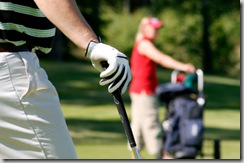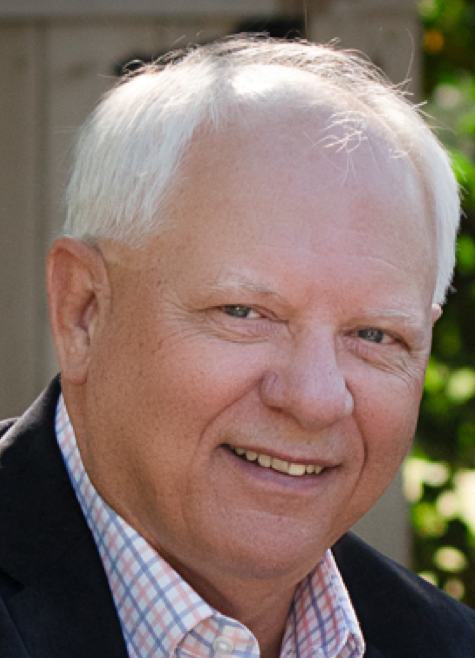 (Back in 2008 I posting a version of this five part series on Slow Play…Interesting how nothing much has changed to improve it. I have updated it and hope you find it as informational now as it was three years ago.)
(Back in 2008 I posting a version of this five part series on Slow Play…Interesting how nothing much has changed to improve it. I have updated it and hope you find it as informational now as it was three years ago.)
As the ice melts away from the Northern States of the USA, or any country in the Northern Hemisphere for that matter, the urge begins to get out of the house and for the golfers of the world…its time to play golf .
Some call this seasonal feeling spring fever; I call it The Golf Season. As a result of this change to better weather, millions of people who have suffered three or four months of dark isolations make the call to the golf course to book a tee time which starts a cascading of events that causes the biggest messes Golf courses around the world have to deal with… Slow Play. The issue of Slow Play is rapidly becoming the kiss of death for many golf courses.
If the overcrowding of the tee-sheet is not enough, the second issue related to the major cause to Slow Play are courses who mandate…. Cart Paths Only. The CPO is one of the many resolutions golf course management put in place for maintenance reasons that causes the bigger problem…Slow Play.
So, since it is the time of year when golfers want to get out and play a round of golf, I want to bring to everyone’s attention some of the major causes of Slow Play in an effort to help all the hackers around the world understand all the factors generating slow play. Maybe this new found knowledge will help keep tempers down. Also, since I am a consultant for process and operational management, I’ll offer the basis of some of the solutions to solve most of the Slow Play.
The causes of slow play are many so I will break this article up into a series to smaller installments.
Part One
First, let me list some of the basic causes of SP which when adding CPO to the mix will just amplify the problem.
Overbooking:
True, there is a formula golf courses use to determine how many tee times they can book before saying they have filled the course for the day. This formula usually is constructed with standard time intervals between tee times. The interval of time between tee times is calculated from how long it takes a foursome of players to play each hole on the course. There are a number of related factors involved, like length of the golf course, elevations, distance between green and tees..and so forth.
Usually the standard interval between tee times is eight minutes between groups. Very seldom is it less and only at top level golf resorts and private golf clubs will the interval be moved up to ten to fifteen minutes between groups. The primary reson these facilities offer more time between tee times is they understand the problems Slow Play can have on their long term revenue flow and really care about their members or customers. However, even when stringent polices are in place changes to the tee time interval formula plays havoc to the pace of play at any golf facility.
Some of those changes are; putting a twosome or fivesome out between two foursomes; allowing a group to not tee off at their designated time; having a club manager who feels he needs a raise in pay and reduced the intervals to less than eight minutes to generate more revenue from the additional green fees. All of these changes will contribute greatly to creating slow play.
Unmanaged Starts:
Another problem related to overcrowding the golf course has to deal with Not having someone at the first tee ‘in charge’* of staging the groups in order and to manage the tee times. The lack of a starter is another big contributor to slow play.
*I used the phrase ‘in charge’ because many times there is someone there at the starter position but they are not in charge. They are there to take slips for proof of pay and could care less if you are on time, next on the tee, have all of your group together, or, as I will talk about next, care if you can even play golf. Usually these starters are told not to take charge for a reason I will go into a little later.
Tees Played
Playing from the inappropriate tees is probably the most controversial pace of play contributor of this list of causes. Nonetheless, it is one of the many contributors causing slow play. For the one course golf facility in a community with a limited number of golf courses, having someone playing from a tee-box that does not match their golf skill level will kill any pace of play established. There is a solution which, again, I will offer soon.
Cellphones:
Yes, Cellphones usage on the golf course rates high on the list of causes to SP. Cellphones are lovely devises and I use them on the course, but usually only to call the pro-shop to report my golf cart being broken down and on a rare occasion in the middle of the summer to find out where the beverage cart is located. Some of the other uses of the cellphone that run on the fringe of acceptable reasons is to report someone standing in the fairway talking on the cellphone instead of hitting his shot to an open green.
I cannot tell you how many times I have been standing on the teebox watching some fool ass idiot moron person 150 yards in front of me pacing back in forth talking on the cellphone while the green, that is over 250 yards away, is now open. I have heard from many of you who say they could not play golf without the cellphone since they need to be in touch with their business or miss a sale. My response is now the same as a lot of golf courses new polices; you use it on the course and you stand a chance of losing it on the course. Yes, tough love has arrived to those who are trying to manage their business on the golf course with a cellphone. The golf course is not the place to be using the cellphone.
Playing Ability:
This issue is not one I like to mention but is a related to what causes slow play. I, like every golfer before me and after me, was a beginner golfer at one time and like every beginner golfer there comes the day they take their first round of golf to the course. Unfortunately, that day comes for most beginners before they are really ready and/or usually on a day when the golf course is overbooked.
The reasons are many why beginner golfers take their first round on a crowded course. The fact is, even if they think they are ready, the first tee jitters is one of the hardest things to get use to having. They naturally are going to make a bunch of mistakes in their swings resulting in real bad shots. First tee nerves can be experienced by us seasons veterans. However, beginner’s playing ability on a crowded golf course will not improve the pace of play. What is the solution?




